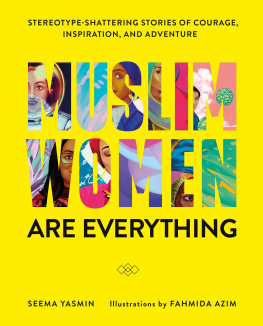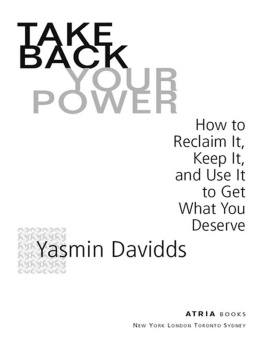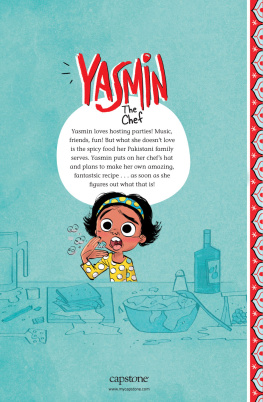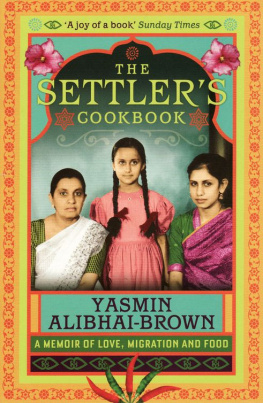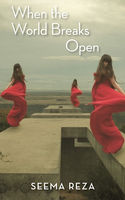Seema Yasmin - Viral BS
Here you can read online Seema Yasmin - Viral BS full text of the book (entire story) in english for free. Download pdf and epub, get meaning, cover and reviews about this ebook. year: 2020, publisher: Johns Hopkins University Press, genre: Home and family. Description of the work, (preface) as well as reviews are available. Best literature library LitArk.com created for fans of good reading and offers a wide selection of genres:
Romance novel
Science fiction
Adventure
Detective
Science
History
Home and family
Prose
Art
Politics
Computer
Non-fiction
Religion
Business
Children
Humor
Choose a favorite category and find really read worthwhile books. Enjoy immersion in the world of imagination, feel the emotions of the characters or learn something new for yourself, make an fascinating discovery.

- Book:Viral BS
- Author:
- Publisher:Johns Hopkins University Press
- Genre:
- Year:2020
- Rating:3 / 5
- Favourites:Add to favourites
- Your mark:
- 60
- 1
- 2
- 3
- 4
- 5
Viral BS: summary, description and annotation
We offer to read an annotation, description, summary or preface (depends on what the author of the book "Viral BS" wrote himself). If you haven't found the necessary information about the book — write in the comments, we will try to find it.
Viral BS — read online for free the complete book (whole text) full work
Below is the text of the book, divided by pages. System saving the place of the last page read, allows you to conveniently read the book "Viral BS" online for free, without having to search again every time where you left off. Put a bookmark, and you can go to the page where you finished reading at any time.
Font size:
Interval:
Bookmark:
Viral BS
Medical Myths and Why We Fall for Them
DR. SEEMA YASMIN

Johns Hopkins University Press
Baltimore
2021 Seema Yasmin
All rights reserved. Published 2021
Printed in the United States of America on acid-free paper
9 8 7 6 5 4 3 2 1
Johns Hopkins University Press
2715 North Charles Street
Baltimore, Maryland 21218-4363
www.press.jhu.edu
Library of Congress Cataloging-in-Publication Data
Names: Yasmin, Seema, 1982 author.
Title: Viral BS : medical myths and why we fall for them / Dr. Seema Yasmin.
Description: Baltimore : Johns Hopkins University Press, 2021. | Includes index.
Identifiers: LCCN 2020018587 | ISBN 9781421440408 (hardcover) | ISBN 9781421440415 (ebook)
Subjects: LCSH: Medical misconceptionsMiscellanea.
Classification: LCC R729.9 .Y37 2020 | DDC 610dc23
LC record available at https://lccn.loc.gov/2020018587
A catalog record for this book is available from the British Library.
Special discounts are available for bulk purchases of this book. For more information, please contact Special Sales at .
Johns Hopkins University Press uses environmentally friendly book materials, including recycled text paper that is composed of at least 30 percent post-consumer waste, whenever possible.
One morning in the fall of 2014, a woman walked into a pediatricians office in Texas. Six thousand miles away, across the Atlantic Ocean, an Ebola outbreak was spreading through Sierra Leone, Guinea, and Liberia. The virus had infected thousands of West Africans and killed nearly 5,000 people.
In Texas, the woman asked the pediatrician to give her daughter a vaccine to protect against Ebola.
There is no vaccine for Ebola, the doctor replied. And even if we had one, your daughter wouldnt need it. Shes not at risk of getting Ebola.
The mother wasnt convinced. She asked again. Ebola was killing people and her daughter needed the Ebola vaccine. This time the pediatrician shifted the conversation away from Ebola to a far deadlier disease: flu. Flu kills upward of 40,000 Americans every year, most of them children. Some years the death count doubles and creeps past the 80,000 mark.
I cant give your daughter a vaccine for Ebola, the pediatrician said, because an Ebola vaccine doesnt exist. But it is flu season and I can give your daughter the flu vaccine.
Flu vaccine?! the mother scoffed. I dont believe in those things! She stormed out of the doctors office.
We are strange, complicated, irrational animals. Our brains process information at a rate of a billion billion calculations per second, a number so large its known as an exaFLOP, a processing capability unmatched by any supercomputer.
Our ability to process such an extraordinary amount of information so quickly doesnt mean we do it sensibly. We are more likely to die in a car crash but more scared of flying on a plane; more likely to die from flu but more scared of Ebola.
Sometimes the inputs dont make sense. In a murky world full of uncertainty, we fill in the knowledge gaps, color in our fears with theories and stories that help us make sense of the unknowns. Facts are boring. Flu deaths and car crashes are mundane. Ebola, a plane falling out of the sky, those stories are sensational.
The stories we tell ourselves, even the ones that scare the pants off of usthat our baby girl in central Texas could seep blood from every orifice because of a viral hemorrhagic fever, that vaccines mandated by schools could shrink our childrens brainsare sticky stories that we remember.
Stories brimming with highs and lows, tension, exquisite detail, and suspense stimulate the release of the hormone and neurotransmitter oxytocin. Stories light up our brains. No wonder children dont ask for a bedtime fact, they ask for a bedtime story. Stories help us make order of a world bursting with uncertainty. The more fantastical, the better.
I was 11 years old when I learned about a fake moon landing. Cccclccchhhh, my grandmother said, clicking her tongue as she drew the curtains. Cccclccchhhh. The Americans didnt walk on the moon. Dont listen to their stories. We had finished saying evening prayers, our eyelids still warm from the special supplication whispered while looking at the moon, the unwalked upon moon. We had blown into our hands, pressed fingertips gently over our eyelids, and recited the moon prayera prayer for clarity and vision.
I rolled my turquoise velvet prayer mat into a long cheroot, tucked it beneath the settee, and looked at the yellow slice of light between the edges of the curtains my grandmother hadnt quite brought together. The moon. Its shape dictated our calendar, its sighting decided which day we would wear sparkly clothes and eat sweet Eid pastries.
My grandmother was a softly spoken woman with a round belly that she rested her hands on. She said little about the world, rarely commented on the small-town sagas that filled our days. This woman, born in a tiny village in India, living in a factory town in England, this sweet old woman of few words and even fewer opinions, was a conspiracy theorist?
We were a family of conspiracy theorists. After Sunday sermons at the mosque three streets away, my cousins and I would rush back to our home, form a half-moon around a black Sony cassette player and listen to Michael Jackson songs backward. Hes saying worship Satan! my older cousin would claim, pressing the clunky stop button. Listen! Michael Jackson is a devil worshiper!
We studied the cover of his Dangerous album, drawing a line between the three monkey heads to form a pyramid, pointing to the red pentagram inside the pyramid, the couplewas it Adam and Eve?trapped inside a glass orb. Signs of the Illuminati, we agreed, nodding our heads.
Even more entertaining than Ghostbusters and The Neverending Story were the tales of Aleister Crowley, the Knights of the Round Table, and the secrets behind the British Royal Family. One book we read and reread together told us that the Queen of England was a reptile in human form. A cassette tape we played over and over said Prince Charles was a shapeshifter who feasted on newborn babies. We lapped it up, our eyes wide with fear and wonder.
All of our childhoods we listened to stories about the monarchy and the British Empire. Once upon a time, one in four humans on the planet was a subject of the British Empire, our parents stories began.
Thats wild, we said. Sounds made up.
On my cousins blue and yellow bedroom wall was a map of the world in Gall-Peters projection, with every country the British had colonized colored in pink. There was our parents birthplace, India. Pink. The birthplace of our grandparents, Burma. Pink. Entire swathes of continents ruled by an island nation small enough to fit into India eighteen timesat least according to its size before the British dragged a pencil across a map, sparked a genocide, and carved India into separate, warring nations.
Like stories of the Illuminati and shapeshifting monarchs, we reveled in the tales of a tiny island with the audacity to rule the planet. That map and our parents stories were daily reminders that the absurd was possible; the cassette tape sermons evidence that the fantastical was more compelling than what the government purported to be the truth.
Besides, the official maps we studied in school were made up, the cassette tapes told us. Europeans had fudged the way we looked at the world and our home countries. Geert de Kremer, a sixteenth-century Flemish man, better known as Mercator, had drawn a map that shrank India and Africa and beefed up Europe. It was a conspiracy. But we had our stories. Stories that helped us band together against these travesties, to counter the narratives that made us small and them big. There was safety in numbers, and we found unity and relief in our collective beliefs.
Next pageFont size:
Interval:
Bookmark:
Similar books «Viral BS»
Look at similar books to Viral BS. We have selected literature similar in name and meaning in the hope of providing readers with more options to find new, interesting, not yet read works.
Discussion, reviews of the book Viral BS and just readers' own opinions. Leave your comments, write what you think about the work, its meaning or the main characters. Specify what exactly you liked and what you didn't like, and why you think so.

